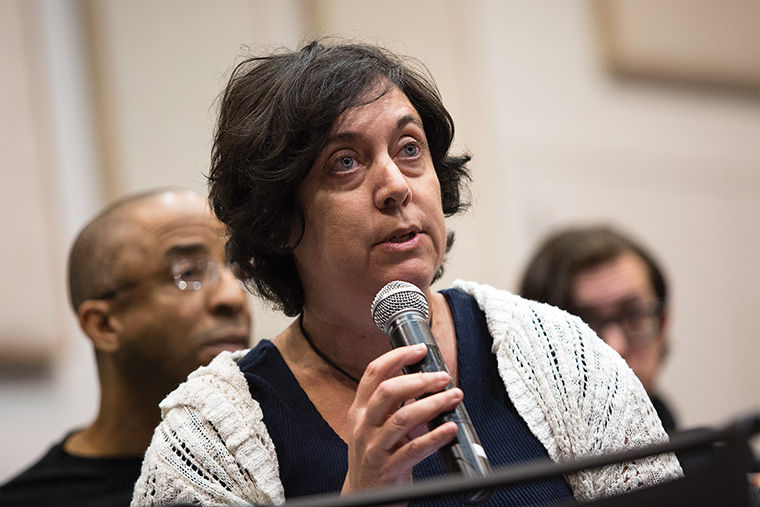P-Fac calls for improved budget transparency from administration
Diana Vallera, an adjunct professor in the Photography Department and part-time faculty union president, said the college needs to better compensate its adjunct faculty in light of a study conducted by Graff, Ballauer & Blanski, a local public accounting firm, on behalf of P-Fac.
April 25, 2016
A study commissioned by P-Fac, the college’s part-time faculty union, found only 13 percent of funding for all salaries and wages at the college goes to adjunct faculty, who teach 48 percent of the college’s courses, according to an April 14 P-Fac press release.
Graff, Ballauer & Blanski, a public accounting firm located in suburban Northfield, conducted the study by analyzing Columbia’s annually audited financial statements posted on its website. According to the study, the college spends approximately $101.1 million on salaries and wages per fiscal year.
“This is pretty alarming,” said Diana Vallera, an adjunct professor in the Photography Department and P-Fac president. “It will continue to reveal where their priorities [are and] where they are allocating their resources. It doesn’t seem to be toward student learning, diversity and certainly not toward valuing our faculty.”
Cara Birch, spokeswoman for the college, said in an April 21 emailed statement that the college continues to encourage participation and dialogue about the
college’s priorities.
“The college’s Strategic Plan, developed with broad support and participation of the Columbia College Chicago community, puts the success of our students at its center, ensuring that we are preparing our graduates to thrive in a rapidly changing world,” Birch said in the statement.
The accounting firm also reported that Columbia’s finances improved each year since 2010 with the college’s net assets and endowment increasing and long-term debt decreasing.
According to the study, the college’s net assets increased to $434.8 million in 2014, a 21.5 percent increase since 2010; the college’s long-term debt decreased to $92.3 million in 2014, an 11.3 percent decrease from 2010; and the college’s endowment increased to $135.2 million in 2014, a 14.7 percent increase since 2013.
Vallera said the college’s financial plans need to be more transparent so the college community can better understand where and why budget cuts are happening.
“We are concerned about what it is doing to the whole community and the quality of student learning,” Vallera said. “It is related to the dumbing down of the programs and the college using finances as an excuse to push through all these changes that are harming the mission of Columbia.”
P-Fac has expressed frustration in the past about a perception that the college was taking classes away from long-serving adjunct professors, enlarging class sizes, eliminating departments without consulting faculty, ignoring a need for diversity at the college, hiring new upper administration and violating federal labor laws.
“If [the college] can’t be transparent about all this, it doesn’t evoke any confidence, not just in P-Fac, but also in the whole community,” Vallera said.








